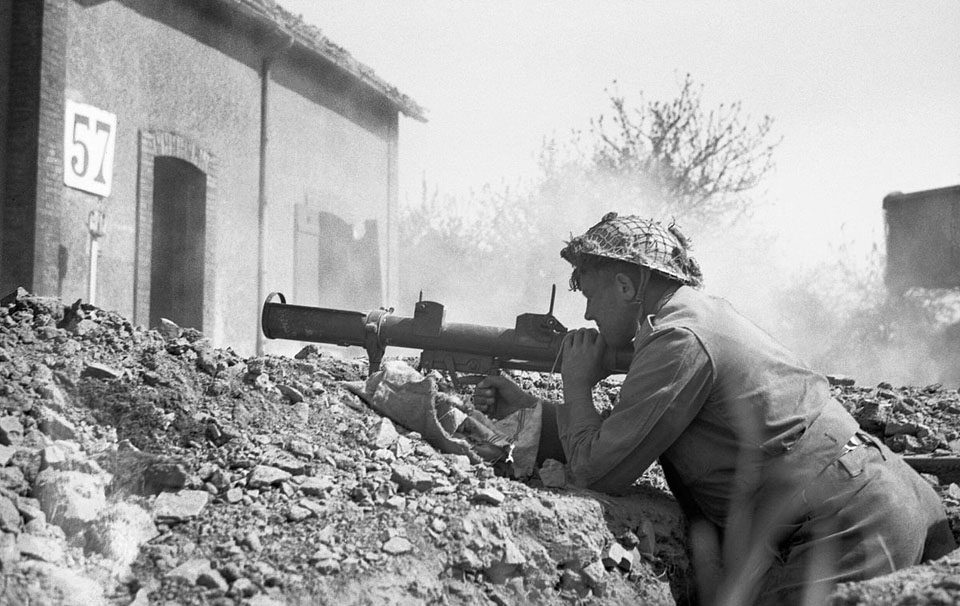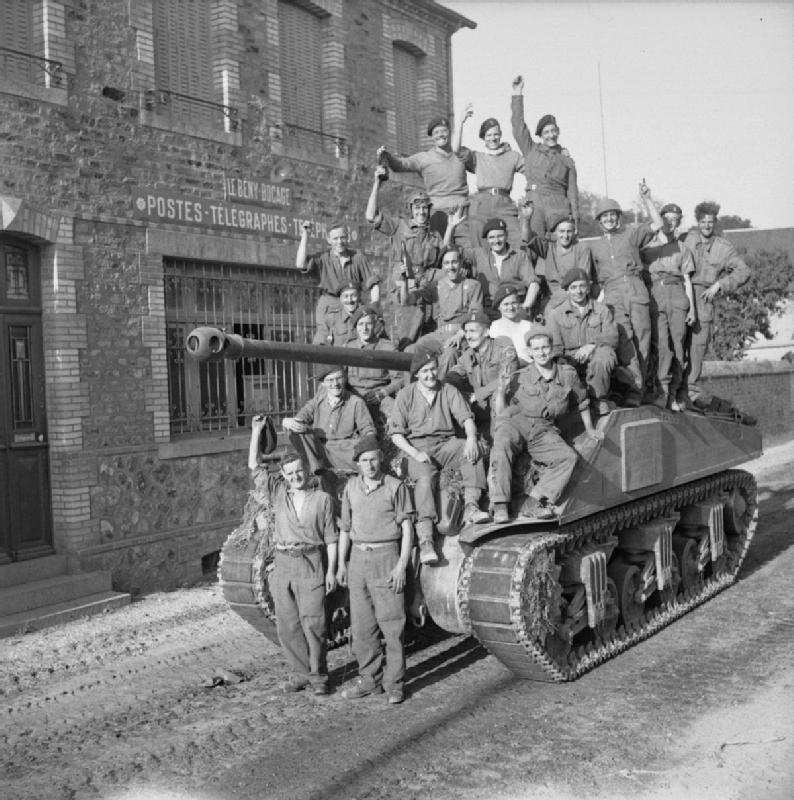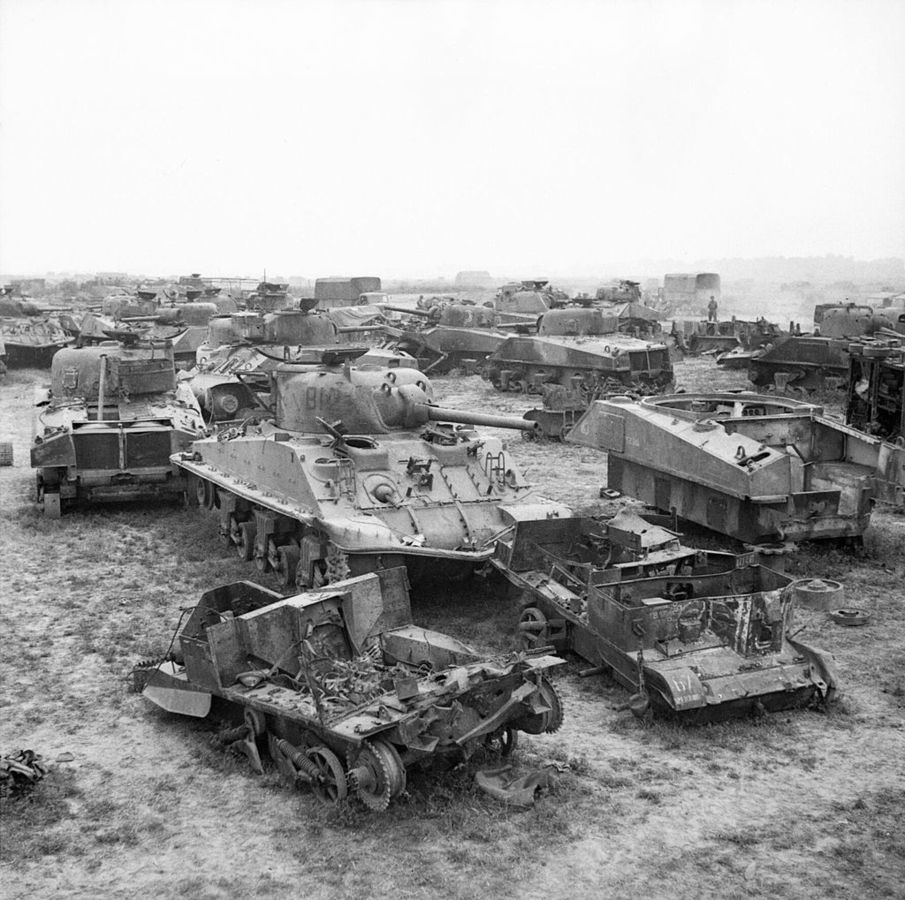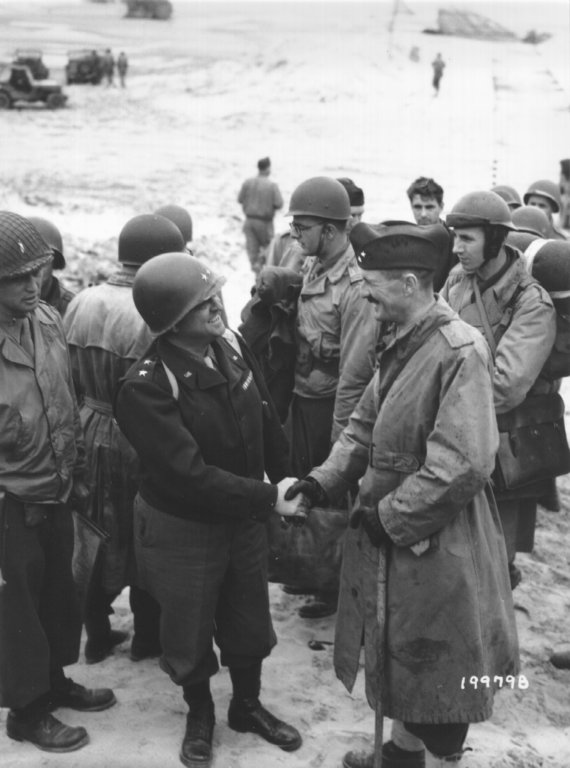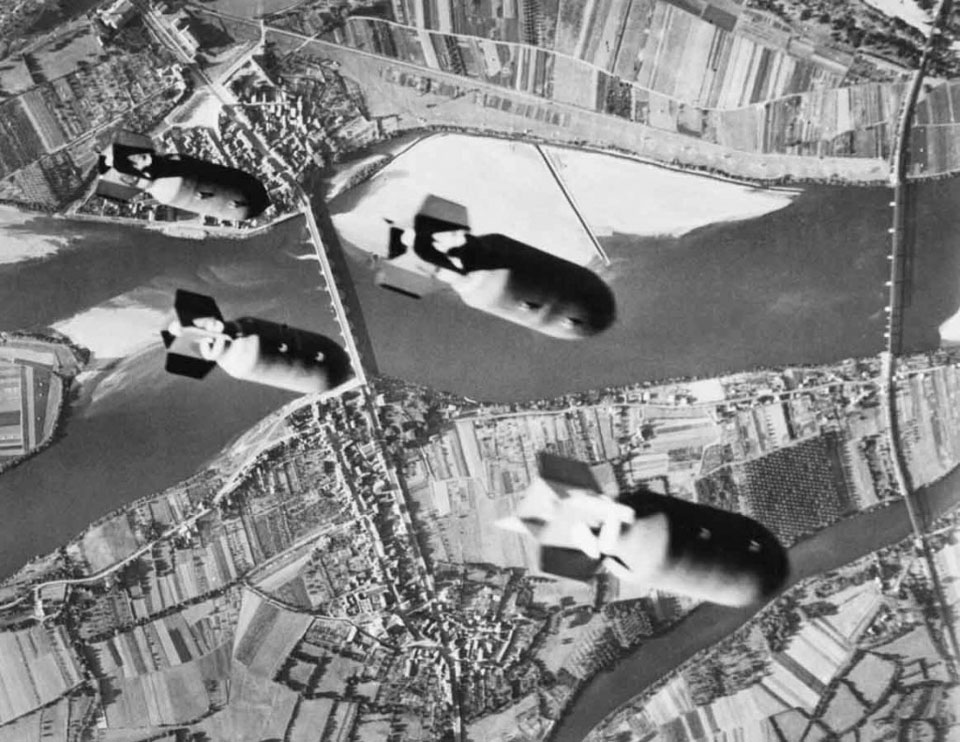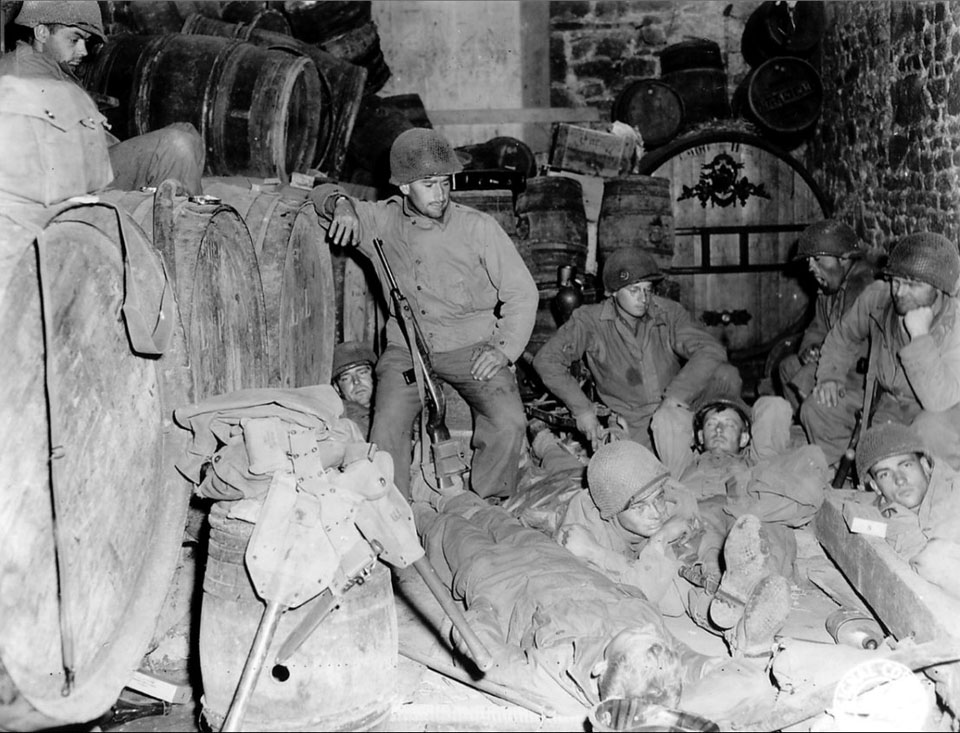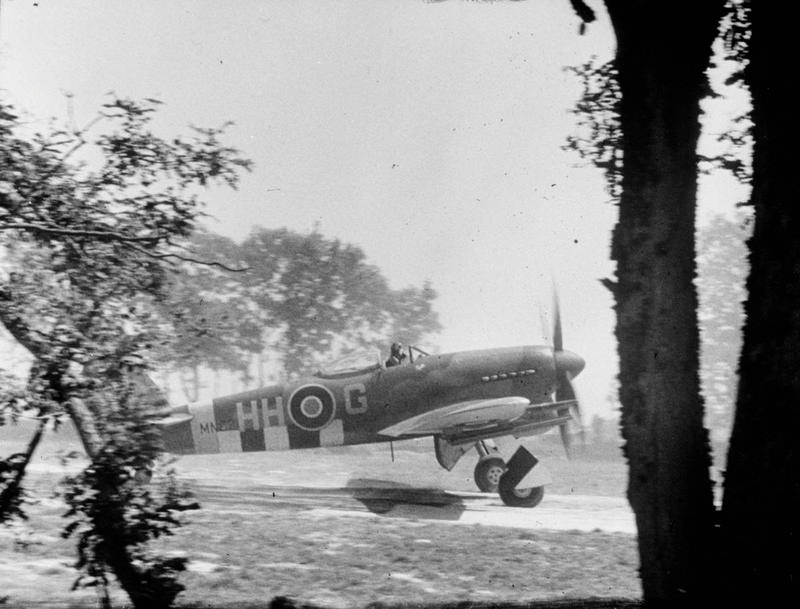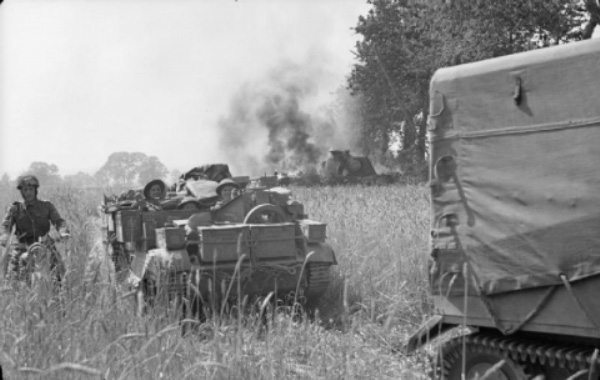Air Operations, Carolines
- FEAF B-24s attack Utagal Island.
- 2 475th Fighter Group P-38s down a D3A 'Val' dive bomber and 2 A6M2-N 'Rufe' float planes over Koror Island in the Palau Islands.
Air Operations, CBI
BURMA- 8 10th Air Force B-25s attack the rail line between Hopin and Naba.
- 10th Air Force fighter-bombers attack Shwegu and a bridge near Mohnyin, and support Allied ground forces near Myitkyina and Taungni.
- 8 341st Medium Bomb Group B-25s attack the airfield at Wuchang.
- 2 B-25s attack Siangyin.
- More than 90 14th Air Force P-40s and P-51s attack numerous river targets and the airfield at Henyang.
Air Operations, East Indies
V Bomber Command B-24s attack the Namlea airfield on Boeroe.
[Air Operations, Europe
RAF BOMBER COMMANDDaylight Ops:
- 777 aircraft are sent to bomb various V-weapons sites. Included in this total are 385 Lancasters, 324 Halifaxex and 67 Mosquitos. Only 79 aircraft bomb targets. The reason why the others do not are no reported by Bomber Command, but the most likely reason is poor weather conditions.
- No aircraft are lost.
FRANCE:
- 385 1st Bomb Division B-17s attack a rail bridge and five airfields near Paris.
- 15 1st Bomb Division B-17s attack various targets of opportunity.
- 3 B-17s are lost
- 257 2nd Bomb Division B-24s attack an oil depot at Rouen, four bridges, and four airfields.
- 33 B-24s attack varous targets of opportunity.
- 1 B-24 is lost
- 193 3rd Bomb Division B-17s undertake Operation BUICK--dropping 281 supply containers to French Resistance fighters at four locations in southeast France.
- 76 3rd Bomb Division B-17s attack the Tours Airdrome.
- 1 B-17 is lost
- 61 3rd Bomb Division B-24s attack V-weapons sites at Pas-de-Calais, but nearly 50 other abort due to bad weather.
- Escort for the various heavy-bomber missions is provided by 397 VIII Fighter Command fighters.
- 4 fighters and their pilots are lost in action, 7 others and 2 pilots are lost in operational accidents
FRANCE:
- Approximately 250 IX Bomber Command B-26s and A-20s attack eight rail bridges spanning the Loire River.
- 9th Air Force fighter-bombers attack bridges and provide support for ground forces.
- USAAF fighter pilots down 4 Bf-109s during the afternoon.
- The 9th Air Force's newly operational XIX Tactical Air Command (XIX TAC, commanded by Maj-Gen Otto P. Weyland) begins providing direct support for the newly operational US 3rd Army. For the moment, only three fighter groups are assigned to the XIX TAC.
ITALY:
- 12th Air Force B-25s and B-26s attack a marshalling yard and several bridges.
- XII TAC fighter-bombers attack airfields, landing grounds, communications targets, and rail targets, especially in the Po River valley.
Air Operations, Marianas
- Organized Japanese resistance on Tinian ceases.
- The 318th Fighter Group, 6th Night Fighter Squadron, and 41st Medium Bomb Group will continue to support US ground forces on Guam and conduct attacks against the bypassed Japanese bases on Pagan and Rota islands.
Air Operations, New Guinea
Most 5 Air Force aircraft are grounded by bad weather, but several B-25s and P-39s attack ground targets.
[Allied Planning
ANVIL, the invasion of southern France in support of OVERLORD, is officially renamed DRAGOON at Prime Minister Churchill's insistence. The new name is rumored to reflect Churchill's opinion of the operation, namely that he was dragooned by the Americans into accepting it.
[Battle of the Atlantic
The Kriegsmarine deploys radio-controlled Linsen assault boats against Allied shipping. These small vessels are packed with 600 pounds of explosives and account for the early loss of the destroyer HMS Quorn and various other vessels.
[China
The Japanese still besiege Hengyang, frustrating attempts by the Chinese garrison to open a gap through the enemy lines.
The US 14th Air Force has carried out 4,454 missions since May 26 in support of the Chinese forces engaged in central east China.
[Diplomatic Relations
An anti-Japanese Burmese government-in-exile is formed in India.
[Eastern Front
Troops from Ivan Chernyakhovsky's 3rd Belorussian Front, heading for Königsberg in East Prussia, take Kaunas, capital of Lithuania. Elements of the 1st Baltic Front reach the Gulf of Riga about 25 miles west of the city. However, the Russians are unable to consolidate so as to capture Riga and isolate the German Army Group North from the rest of the German army. Many of the routes leading to east Prussia from the Baltic States, (described by the Germans as Ostland) are cut.
In Poland the patriots of the Home Army (Armija Krajowa), under 'General Bor' the nom de guerre of Gen Tadeusz Komorovski, begin open operations in Warsaw. This army is aligned politically with the exile government in London and, although by no means of one mind in political affairs, is generally anti-communist. The rising is timed so that when the Russians arrive in Warsaw, as they seem certain to do very shortly, they will find an established Polish government with the prestige of having liberated the national capital. However, the Russian accounts claim that because of the long rapid advance they have made during July, they are unable, for the moment, to move further.
The Russian advance halts suddenly at the suburb of Praga, the other side of the Vistula. The western position is that the Russians have stopped so that the Germans would do the job wiping out the anti-Soviet forces in Poland. The most telling point on the western side is the reluctance of the Russians to lend any help to British and American plans and, after much negotiation, attempts to drop supplies to the Poles. Needless to say, the insurgents are surrounded and virtually annihilated by the Germans. The remnants of the patriot forces surrender on October 2.[MORE]
[Finland, Politics
President Risto Ryti resigns. Marshal Karl Gustav Mannerheim is chosen to replace him. The Finns hope this will facilitate negotiations with the Soviets.
[Guam
US Marines and infantry pursue the enemy northwards, reaching a line that goes from the west coast north of Agana to Pago Bay on the east coast. They have taken more than half of the island.
[New Guinea
Operations on Biak and on the Vogelkop peninsula continue on a small scale.
In the Aitape sector the Americans advance as far as the Niumen stream, stabilizing their advanced lines.
[Occupied Poland
The Home Army in Warsaw rises against the German. Led by Gen Tadeusz Komorowski, there are 38,000 insurgents in the city. The Home Army is under the command of the government-in-exile in London, As such, it can expect little aid from the Soviets.
The Polish resistance - the 'Home Army' - in Warsaw rises as the Soviets approach. Commanded by Gen Tadeusz Bór-Komorowski, the Warsaw corps of 50,000 troops attacks the relatively weak German force and within three days gains control of most of the city. The Germans send in reinforcements and force the Poles into a defensive position, bombarding them with air and artillery attacks for the next 63 days. Meanwhile, the Red Army, which had been detained during the first days of the insurrection by a German assault, occupies a position at Praga, a suburb across the Vistula from Warsaw, and remains idle. In addition, the Soviet government refuses to allow the Western Allies to use Soviet airbases to airlift supplies to the beleaguered Poles.
Without Allied support, the Home Army is split into small, disconnected units. It was forced to surrender when its supplies gave out (October 2). Bór-Komorowski and his forces were taken prisoner, and the Germans then systematically deported the remainder of the city's population and destroyed the city block by block.
[Tinian
All organized resistance by the Japanese comes to an end after the failure of their last counterattack. As usual the garrison has been completely wiped out. There are over 6,000 Japanese dead and 250 prisoners, an unusually large proportion. The Americans have lost 390 killed and 1,800 wounded.
[United States, Command
The Army Air Forces, Pacific Ocean Areas (AAPOA) is activated at Hickahm Field, Hawaii. Lt-Gen Millard Harmon is named the commander. Harmon's command provides logistics and administration support fof Lt-Gen Robert C. Richardson, Jr's US Army Forces, Pacific Ocean Areas (USAFPOA), which includes the 7th Air Force. Harmon is also responsible to Adm Chester Nimitz, commander in chief, Pacific Ocean Areas (CINCPOA), for operations of Army Air Force air units in the Pacific Ocean Areas. But Harmon, as deputy commander of the 20th Air Force, answers only go Gen Henry H. Arnold in all matters relating to the 20th's operations in Nimitz's area of responsibility.
[United States, Home Front
Manuel Quezon, President of the Filipino Government-in-Exile, dies at the age of 65. Sergio Osmena is sworn-in.
[Western Front
Gen Patton's 3rd Army becomes operational and takes position on the Allied right flank. The US forces are now organized as 12th Army Group (Bradley), 1st Army (Hodges) and 3rd Army. Patton has 4 Corps under his command - the VIII, XII, XV and XX. The VIII Corps, transferred from 1st Army, is commanded by Gen Troy Middleton, and consists of 4 divisions - the 4th Arm, 6th Arm, 8th and 79th. Miles Dempsey's British 2nd Army and Harry Crerar's 1st Canadian Army for 21 Army Group which Montgomery commands. As well as this post he still etains overall direction of the ground forces.
Patton's main task initially is to overrun Brittany, but some of his troops will head for Le Mans from the beginning. US 1st Army will advance on Mortain. The British and Canadians will continue to attack between Caumont and Caen. In this sector the British XXX Corps is at the moment advancing on Villers Bocage.
The XV Corps, under Gen Wade H. Haislip, consists of 2 infantry divisions, the 83rd and 90th, and the 5th Arm. The other 2 corps in the 3rd Army, the XII and XX, still being formed, are commanded by Gen Manton S. Eddy and Gen Walton H. Walker.
In the 1st Army sector, now commanded by Gen Hodges, as Gen Bradley has moved up to command the 12th Army Group, the VII and XIX Corps ocntinue their advance in the area of Vire, northeast of Avranches, which has been taken.
In the British sector the XXX Corps is advancing in the direction of Villers-Bocage.
[Images from August 1, 1944
|
|
|
|
|
|
|
|
